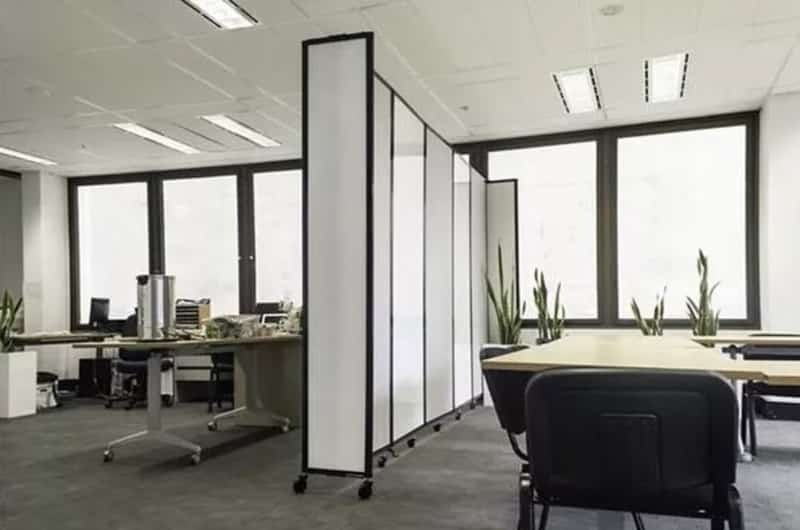The idea of an office has evolved from formal, monotone setups to vibrant, colourful, and casual hotspot for employees. One such change is the open-office concept, which has gained popularity. It has employees without any barriers between them to improve communication and comfort.
However, reality shows that this approach has increased distraction among employees and is costing the company productivity. Some are not comfortable with the lack of privacy, either. Office partitions are thus still sought out to solve these issues and help improve aesthetics. Office partitioning at the moment has been a saviour to many businesses, especially those leasing office space in Central London or other high yielding areas.
Businesses are able to use partitions and sublease space to other businesses as we navigate these difficult times.
Partitions Related Questions
There are a variety of office partition systems available to choose from. They come in a variety of sizes, designs, materials, costs, etc. Your situation and resources determine what will suit you best. A thorough breakdown of all the factors of influence is thus necessary.
Utility of Space
An office building has various sections used for different purposes. The main workspace houses the employees, cafeteria/lunchroom, board/meeting room, a workshop where applicable, lobby, and, more recently, sports area. Every office section has different partitioning requirements that will suit only that one.
For example, the sports room will need sturdier partitions than the workspace as they could be subjected to high impacts from any sports equipment used, like balls. They would also need to contain the noise within that section and not distract the rest of the office. If unsure, consult an interior decorator.
Type of Installation
Continuing from the previous factor, the type of installation you require will change according to the use case. Some places will require permanent fittings, such as washrooms, while others will have a more flexible purpose case, like a meeting room double as an extended workspace. The latter ones will need temporary partitions that can be easily moved or disassembled as and when needed.
There is also the choice of full-wall type office partition systems, small benching types that support partial open office format, and everything in between. The amount of office space available is also essential when going for your choice of installation.
Material
Partitions are made from a host of materials like wood, metal, glass, fiber, etc. They each have their advantages and disadvantages. How you want to set up your office, budget, and many such factors will have to be considered while choosing the material.
Glass is most popular as it’s aesthetically pleasing, easy to produce, maintain, and replace if damaged. It is, however, prone to damage more quickly and generally is not very privacy-friendly. Metal and wood are other popular choices but come on the heavy side of weight, budget, and installation.
Budget
Your budget for partitioning must align with your idea of how you want your office partitioned. The cost will depend on the material, location, area to be covered, size of the partition, paint, design, etc. Long-term costs will include maintenance, loss from the office downtime for installation, modifications, durability, etc. The cost can be made to suit your budget with inclusion or exclusion of the options chosen.
Office partition systems can help strike a balance between a communicative office space and employee privacy. They may very well be the barrier between productivity and its loss.


